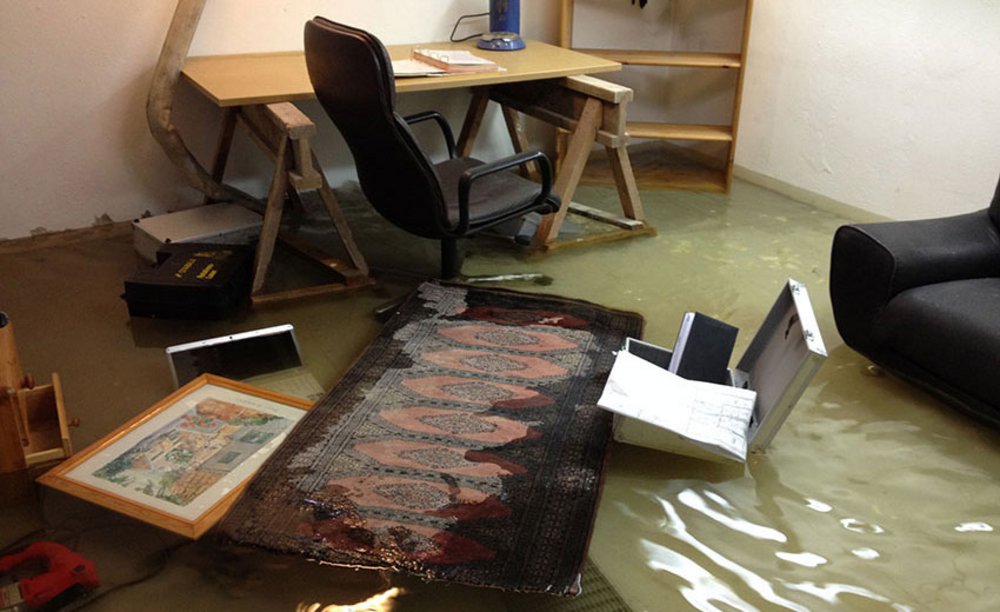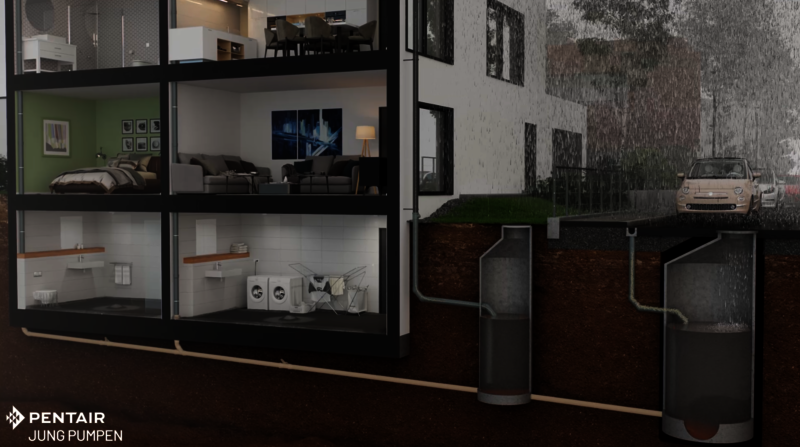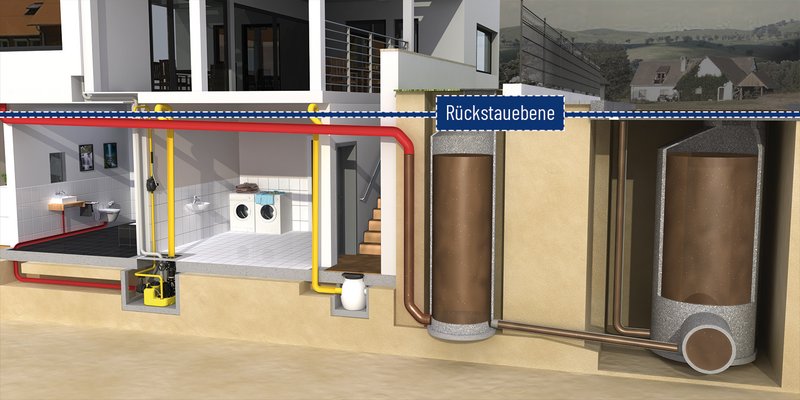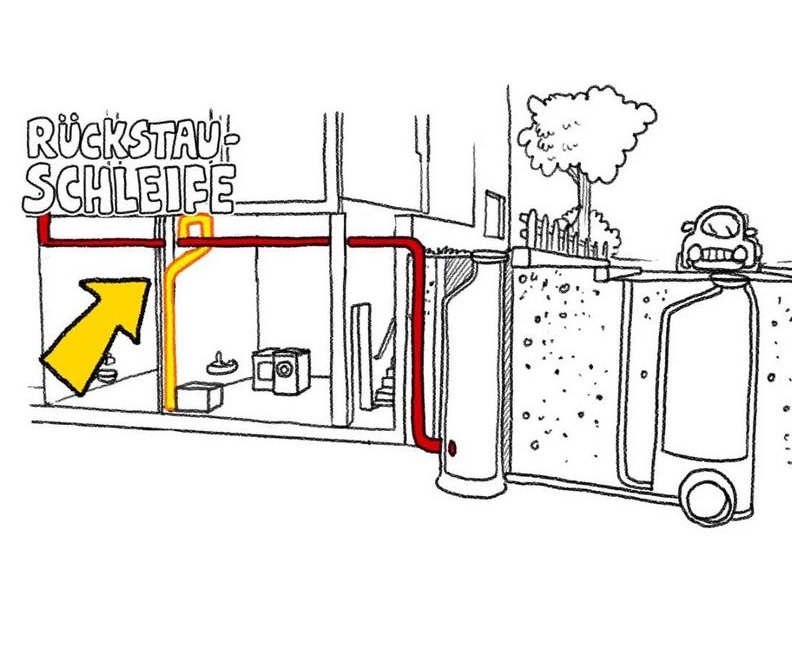Protection against flooding in the basement
Increasing heavy rainfall events lead to more and more frequent flooding in all parts of the world and thus endanger inventory and the building substance below the backpressure level. Basement flats as well as wellness oases, fitness rooms and offices in the basement area are particularly at risk.
In the following, we describe the causes of backpressure and name measures for effective protection against backpressure sewage. In addition, with the help of our backpressure animation, you can also animate a backpressure scenario online and see what happens when heavy rainfall occurs and there is insufficient backpressure protection.

How can a backpressure occur?
If more water flows into the sewage system during a heavy rain than it can "swallow", a backwater occurs.
This means that water from the sewer below the street enters the house through the house connection pipe.
All rooms below the so-called backpressure level (by definition according to DIN EN 12056 the upper edge of the street) are flooded by sewage escaping from toilets, washbasins or drains if there is no appropriate backflow protection, and considerable damage is the result.
www.backpressure.net
What is meant by the backpressure level?
The drainage pipes of drainage objects in buildings form a connected pipe system through the connection to the sewer.
If the wastewater backs up in the sewer, it simultaneously pushes back into the connected house drainage pipes, so that it rises there to a maximum of the level of the upper edge of the street.
If the water continues to rise, it is discharged via the street drain. As a rule, the upper edge of the street is considered the backpressure level.

The requirements of DIN EN 12056
The public sewer system is dimensioned for medium rainwater volumes. During heavier rainfall events, backwater occurs up to the so-called backpressure level.
According to DIN EN 12056, the upper edge of the street at the connection point is considered the backpressure level, unless otherwise specified locally. Without appropriate backpressure protection, all rooms below street level are flooded by the connection to the sewer.
In the case of backpressure from the public sewage system, a backwater flap can prevent the sewage from entering a house.
But what if the water is heavily interspersed with solids that impair the function of the flap and do not allow it to close properly? If sewage then occurs in the house itself (washing machine pumps out, bathtub is emptied, etc.), flooding occurs from the inside.
The advantages of a lifting station
Even in the event of backpressure, no water penetrates into the basement.
The drainage objects in the basement can still be used. And this even in the event of a backpressure, when the sewer is literally already full.
How to preventively protect against backpressure?
The most effective and safest protection is provided by suitable backpressure protection in the form of backwater valves and lifting stations. Only lifting stations offer comprehensive protection against backpressure.
Advantages of a lifting station
They collect the water in the on-site pump shaft, a robust Hebefix or Baufix or a plug-in compli lifting station. When professionally installed, the wastewater is routed via a backflow loop and reliably pumped into the sewer above the backpressure level. In addition, professional installation and regular maintenance by qualified personnel saves every homeowner a lot of trouble and money.
They collect the water in the on-site pump shaft, a robust Hebefix or Baufix or a plug-in compli lifting station.


